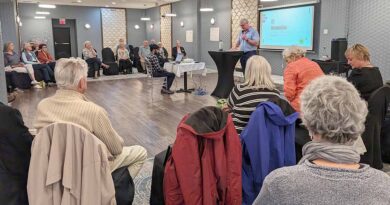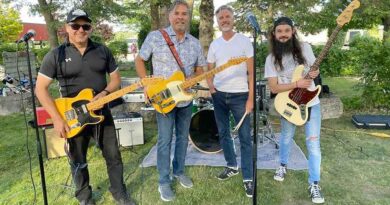Next Up, Mining The Data
By John Swartz
Information Orillia presented the result of the Canadian Index of Wellbeing (CIW) study to an audience of 70 people in council chambers at City Hall Tuesday. They were the lead organization among funders of the study including Orillia, Oro-Medonte, Severn, Ramara, the County of Simcoe, the Simcoe Muskoka District Health Unit and the Local Health Integration Network.
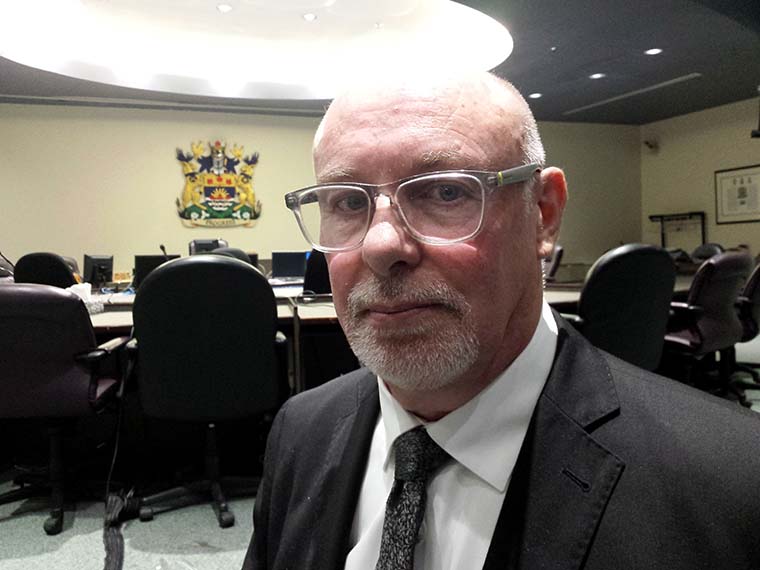
“My part of the project is completed now,” said Michael McMurter. He was the point person, as former chair of Info Orillia, who made the rounds to get everyone on board.
“The idea actually came to the common interest table where the mayors of the communities of Orillia, Oro-Medonte, Severn, Ramara and Rama all come together once a month to discuss common interests. We then shared it with the county. The county came on board. We then went on the road and made presentations to get funding,” McMurter said. The project started in the spring of 2017, with the survey period happening last summer.
Dr. Bryan Smale, director of the CIW and a professor at the University of Waterloo, walked everyone through some of the general findings. Questions in 8 key areas and an associated 8 indictors for each, (64 points of reference) were asked of randomly selected survey recipients. Almost 11% of 9,500 households responded, which considering most national surveys typically poll 2,000 people, 1,017 responses are very good – the report said it’s exceptional.
The most basic result is we scored higher in environment satisfaction and lower in democratic engagement than the other 6 key areas (community vitality, education, health, leisure and recreation, living standards and time use).
Smale said there were some interesting details about those who scored high and low to produce an overall indication. People above average in their opinions of wellbeing tended to be men, older, married, likely to have a degree, retired and had no kids at home. The low opinions generally came from women, younger people, single, those spend more than 30% of income on housing, have a disability or illness, and have children at home.
Of the 8 broad categories, we said community vitality, leisure and recreation and time use were most critical to determining quality of life standards, while demographic engagement was least critical.
The surprise to many was how the Orillia area study’s community vitality sense of belong to to the community indicator results stacked up to other communities (Kingston, Oxford County, Waterloo Region and Bruce-Grey) where the study has been done. We are right in the middle of a tightly packed spectrum. In other words we are about the same in how we perceive how we belong, which is not the same as whether we do or not. Smale said he wasn’t surprised some of the indicators like this one show similarities of result among the other communities.
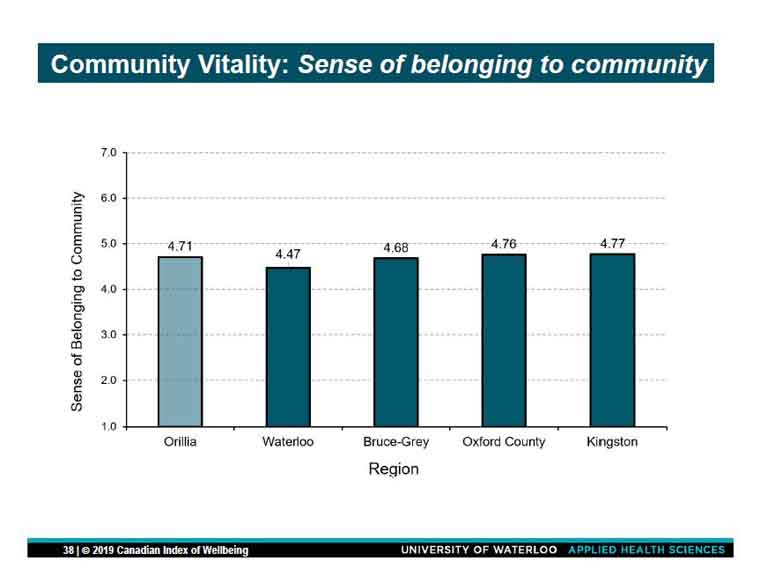
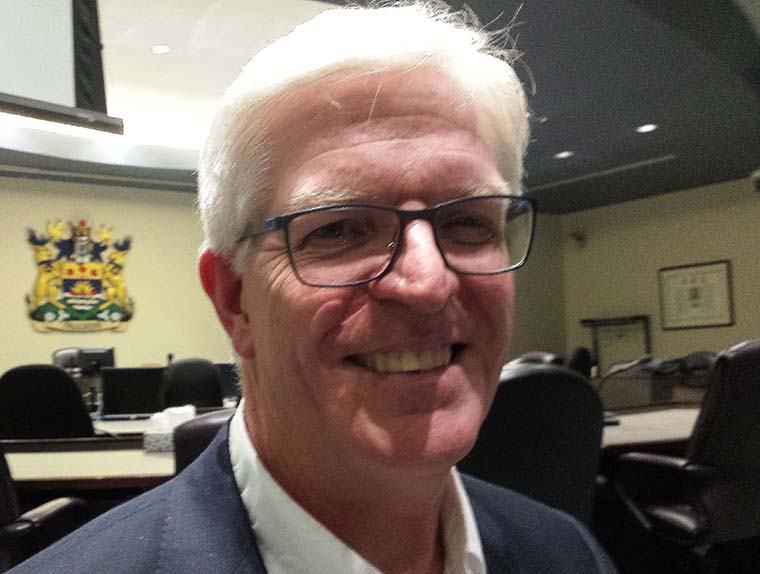
“It’s a good thing because one of the things we’ve discovered is we go into communities, it doesn’t matter which one, but before the survey is conducted people have the evidence. One of the communities we were into, they were quite concerned people weren’t actively engaged, they weren’t volunteering as much, they felt they the community was suffering because they didn’t have enough volunteers; this is a real problem. When we conducted the survey in the community and then showed them how they compared to others, they were right there. It changed the conversation (to); “OK, we were wrong about the assumptions of people being engaged; they are just as engaged here as everywhere else, so why am I feeling that people aren’t connected?”” Smale said.
That’s where the data collected comes in handy. The funding partners have access to the data base and can set parameters and questions in any number of ways to get a read of the community in more detail, more specifically targeted areas of inquiry, than the general findings presented by Smale. This is the kind of thing that could be useful to organizations like library’s, social service agencies, and other community groups to develop policies on say housing, recreation or educational programming, or even transportation.
“I think it will be the absolute benefit of the CIW project,” Mayor Steve Clarke told SUNonline/Orillia of the ability to organize the data according to information needed. “This will provide data and analysis that may come with the data that will drive a lot of direction that takes place in the City over the next years.”
“For example, this year we are doing a core service review of City operations in the City of Orillia. Resulting from this data that is launched today, (it) will be used to help council form a strategic plan and a resulting corporate plan and working plan. What that means to me is every decision we make at council can be driven by the data. I think it will be a key piece for the City and for a lot of community organizations.”
Of course much depends on asking the right questions of the data, and councillors making sure staff are developing the right correlations between data sets to produce relevant results. Clarke thinks the ability to tailor comparisons will be helpful beyond City Hall.
“You can get into the mining of the data. I know the senior’s initiative are looking at using it,” Clarke said.
In addition to the municipalities mentioned, Guelph, Victoria B.C. and Fort McMurray have completed the study, with the latter engaged in an update survey currently. Later this year Nova Scotia and the Yukon Territory are doing it. Smale said he doesn’t have to find communities to take part.
“Most of the communities are really well connected, talking to each other about what’s going on,” Smale said. “We don’t go out and sell this; people come to us and say, “We’ve heard about what you do, we’ve seen this other community work on this stuff and we think it’s really valuable, we’d like to do it to, what do we need to do to work with you to run the survey?””
It’s not as easy as picking up the phone and inviting Smale to do a survey. It takes more than a single organization or group to make it worthwhile because utilizing the results are the key to the study and the more involved at the front end, the more likely the information will be used.
“We basically work with the community to get the survey done. The first thing we say is, build a community consortium, get everybody on board and recognize how this affects everybody; it isn’t just your organization, it’s everybody. Once you have that the next steps will be easier,” Smale said.
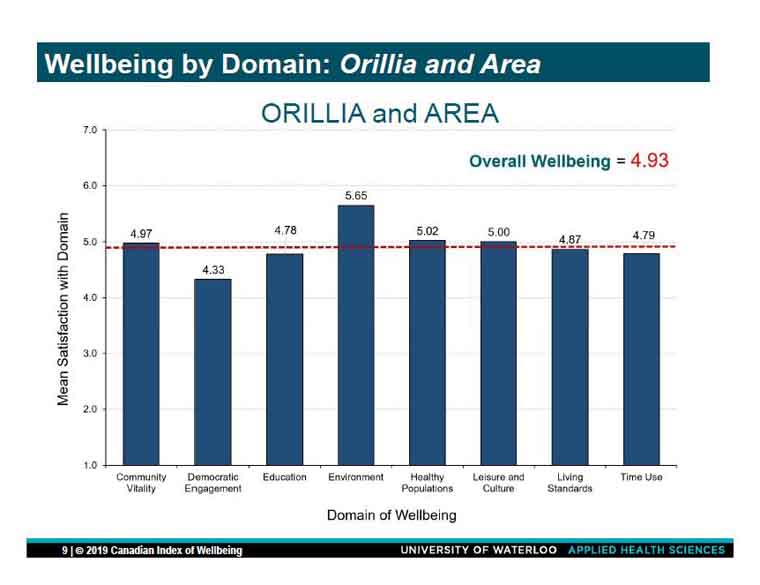
Most of the graphs and charts presented used income bands as characteristics, and most people would think that finding answers to questions would naturally be broken down to income groups, but Smale said many do look at studies like the CIW and fall into that trap and to be wary of doing so. His take is there may be other correlations involved to find solutions.
“I suppose if there was one thing that would be an important conclusion to come to, it’s that most people are so locked into economic reality, it’s all about the economy, if the economy is better everybody will do better as well; our results show that’s not necessarily the case. The economy can improve, but people can still suffer if their circumstance as such they can’t move, they can’t improve their quality of their life,” Smale said.
During the question period, one person asked if women were also in the lower levels of satisfaction as other communities where the study has been done. Smale said there’s still a huge gap between men and women in several indicators like income and family responsibilities that factor into perception of wellbeing.
“It’s one of the arguments that has been made in research, some people argue there is no real difference between men and women in wellbeing and life satisfaction, it’s just because women tend to respond more conservatively to these kinds of questions,” Smale told SUNonline/Orillia. “That’s been kind of debunked. If you take a look it in the context of the way people are leading their lives, women are making more sacrifices and it’s affecting their livelihood.”
When it comes to issues survey takers believed Orillia needs to focus on to improve wellbeing. Access to affordable housing, mental health, poverty, addictions and food insecurity are the top 5. In the townships, affordable housing was also number one, and had different rankings of the other four, except in Oro-Medonte and Severn where employment opportunities replace food insecurity.
Broad areas of concern show women, low income households and young adults are falling behind and to improve wellbeing work needs to be done providing better access to opportunities, strengthening connections, building trust in institutions like government and including more voices in policy development.
The report will be soon available to the general public on the Information Orillia website.
(Photos by Swartz – SUNonline/Orillia, Images Supplied)


